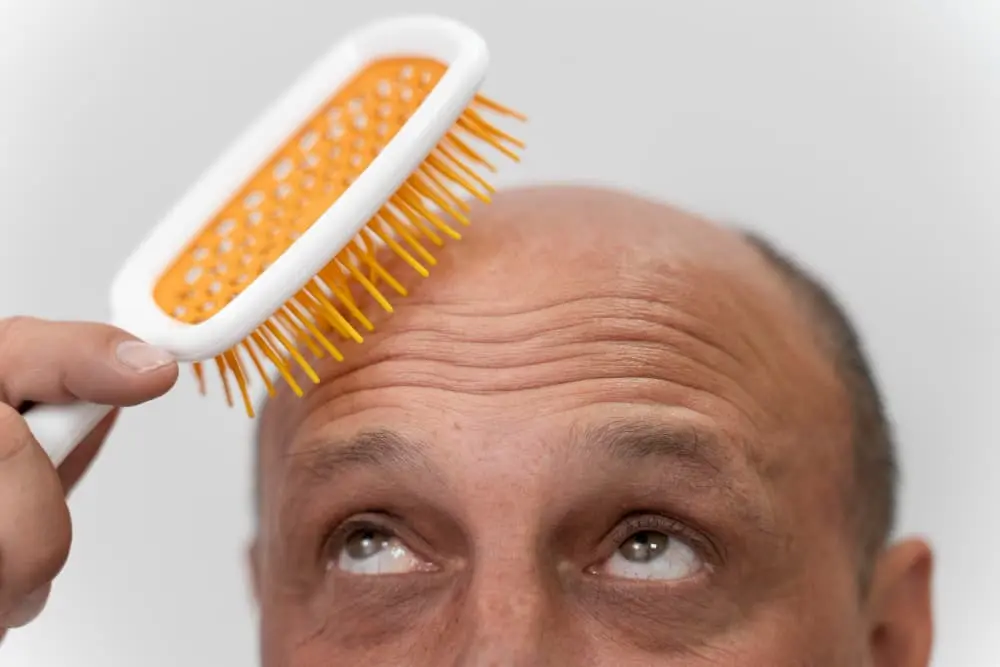
Hair loss is a common concern that affects millions of people worldwide, transcending age, gender, and ethnicity. While it’s often considered a natural part of aging, many factors can accelerate or exacerbate this condition. Understanding the root causes of hair loss is essential for effective management and treatment.
This comprehensive guide delves into the various factors that contribute to hair thinning and baldness, exploring genetic influences, environmental triggers, and health-related issues. By arming yourself with knowledge, you can take proactive steps towards maintaining your hair health and seeking appropriate treatments.
What are the Common Reasons for Hair Loss?
Hair loss can be a distressing experience, influenced by a myriad of factors that range from lifestyle to medical conditions. The most common reasons for hair loss include:
- Genetic Predisposition: Often, the pattern and onset of hair loss are inherited from family members.
- Hormonal Changes: Events like pregnancy, menopause, or thyroid problems can trigger hair loss.
- Medical Conditions: Scalp infections, alopecia areata, and other diseases can lead to significant hair thinning.
- Medications: Certain drugs used for cancer, arthritis, depression, heart problems, and high blood pressure may cause hair loss as a side effect.
- Nutritional Deficiencies: Lack of essential nutrients like iron, protein, and vitamins can lead to hair shedding.
- Stress: Both physical and emotional stress can trigger temporary hair loss.
Understanding these factors is the first step in addressing and managing hair loss effectively.
Genetic Factors and Hair Loss
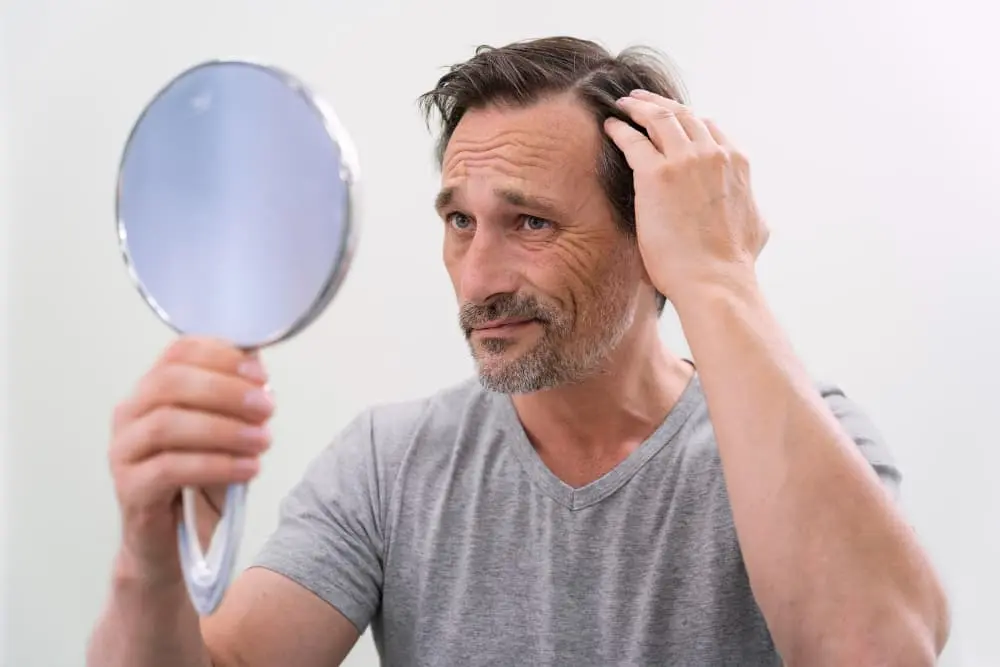
Genetic factors play a pivotal role in hair loss, particularly in a condition known as androgenetic alopecia, or pattern baldness, which affects both men and women. This type of hair loss is characterized by a progressive thinning of the hair, which follows a predictable pattern:
- Men typically experience a receding hairline and bald spots.
- Women generally notice thinning hair along the crown of the head, with the frontal hairline often preserved.
The primary culprit behind genetic hair loss is the sensitivity of hair follicles to dihydrotestosterone (DHT), a derivative of the hormone testosterone.
Follicles that are sensitive to DHT shrink over time, which shortens the lifespan of each hair and eventually leads to the cessation of hair growth. While this condition is largely hereditary, understanding its mechanisms opens avenues for targeted treatments and preventive measures.
Hormonal Changes and Hair Loss
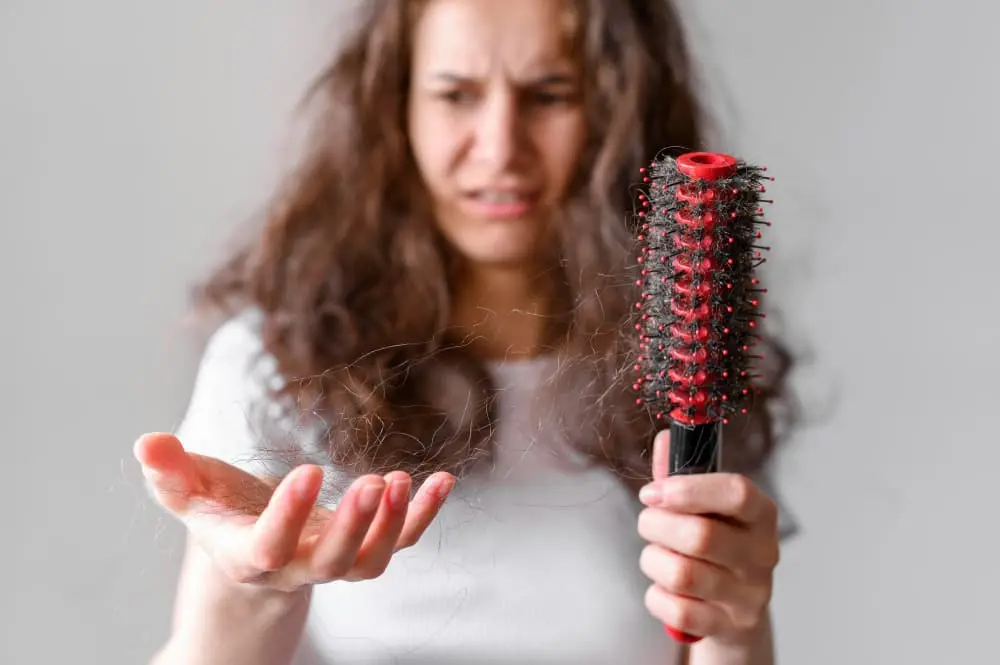
Hormonal changes are a significant catalyst for hair loss in many individuals. These changes can disrupt the normal cycle of hair growth, leading to thinning and loss of hair.
- Pregnancy and Childbirth: Many women experience thick, vibrant hair during pregnancy due to increased hormones. However, postpartum hormonal drop can cause significant shedding known as telogen effluvium.
- Menopause: As estrogen levels decline during menopause, many women find their hair becomes thinner and less dense.
- Thyroid Disorders: Both hyperthyroidism and hypothyroidism can cause hair loss. The hair typically returns to normal with proper thyroid disease management.
- Polycystic Ovary Syndrome (PCOS): Women with PCOS may experience thinning of the hair on the scalp due to higher levels of androgens.
Understanding these hormonal influences is crucial for diagnosing and treating hair loss effectively, often requiring a multi-faceted approach to balance hormone levels.
Nutritional Deficiencies and Hair Loss

Nutritional deficiencies can also lead to hair loss, underscoring the importance of a balanced diet for maintaining healthy hair.
Iron deficiency, which causes anemia, is a major cause of hair loss, particularly in women. Insufficient protein in the diet can weaken hair, leading to easy breakage and loss. Low levels of Vitamin D are linked to alopecia areata and could potentially impact hair growth. Zinc is essential for hair tissue growth and repair, and a deficiency can lead to hair loss.
Ensuring a diet rich in these nutrients, or supplementing when necessary, can help mitigate hair loss attributed to nutritional shortcomings. Regular consultations with healthcare providers can help identify any underlying nutritional issues contributing to hair health problems.
Stress and Hair Loss: What’s the Connection?

Stress can have a profound impact on various aspects of health, including hair growth. The connection between stress and hair loss is primarily seen in three types:
- Telogen Effluvium: Significant stress pushes large numbers of hair follicles into a resting phase, followed by hair shedding a few months later.
- Trichotillomania: An impulse control disorder where individuals have an irresistible urge to pull out their hair, often as a way to deal with negative or uncomfortable feelings.
- Alopecia Areata: Although largely autoimmune, stress is believed to be a triggering factor in some cases, causing patchy hair loss.
Managing stress through lifestyle changes, counseling, or medication can significantly mitigate these effects and promote healthier hair growth. Recognizing the link between stress and hair health is crucial for both prevention and treatment of stress-related hair loss.
Demystifying the Types of Hair Loss
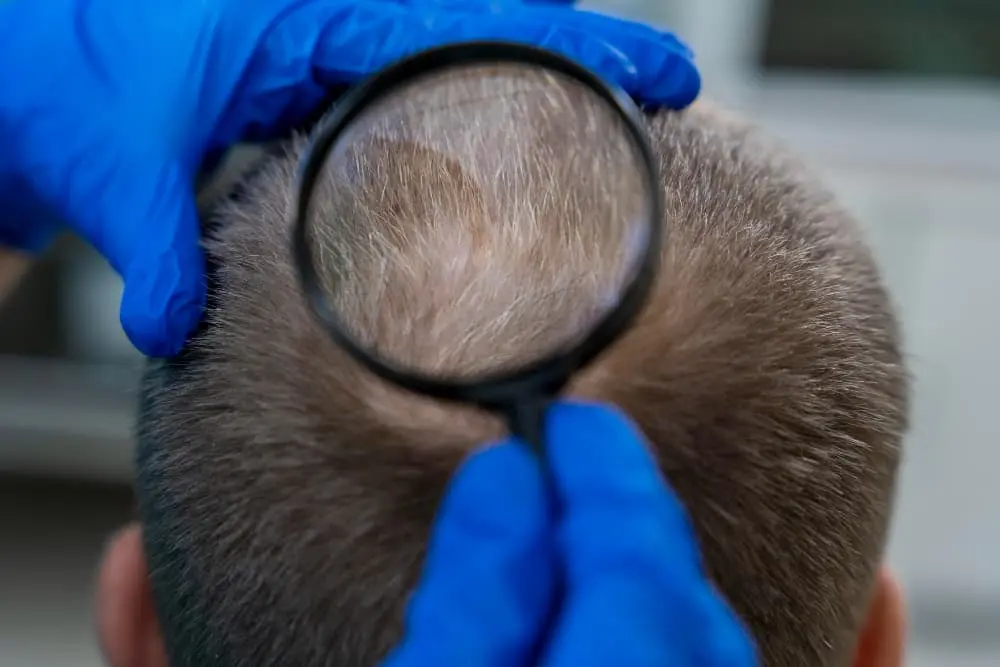
Understanding the different types of hair loss can aid in identifying the appropriate treatment strategies.
- Androgenetic Alopecia: Also known as male or female pattern baldness, this hereditary condition is characterized by a gradual thinning of the hair in a predictable pattern.
- Alopecia Areata: This autoimmune disorder results in unexpected, patchy hair loss that can occur on the scalp and other parts of the body.
- Telogen Effluvium: A temporary condition where hair prematurely enters the resting phase of the growth cycle, leading to widespread thinning and shedding.
- Anagen Effluvium: Commonly associated with chemotherapy, this type of hair loss is rapid and affects the shafts of the hair.
- Traction Alopecia: Caused by constant pulling or tension on hair shafts as a result of certain hairstyles, this condition can lead to permanent hair loss if not addressed early.
Each type of hair loss has distinct characteristics and underlying causes, making it essential to correctly diagnose the condition before proceeding with targeted treatments. Whether dealing with a temporary issue like telogen effluvium or a chronic condition like androgenetic alopecia, understanding the specific type of hair loss is the first step towards effective management.
Male Pattern Baldness: A Common Hair Loss Pattern in Men
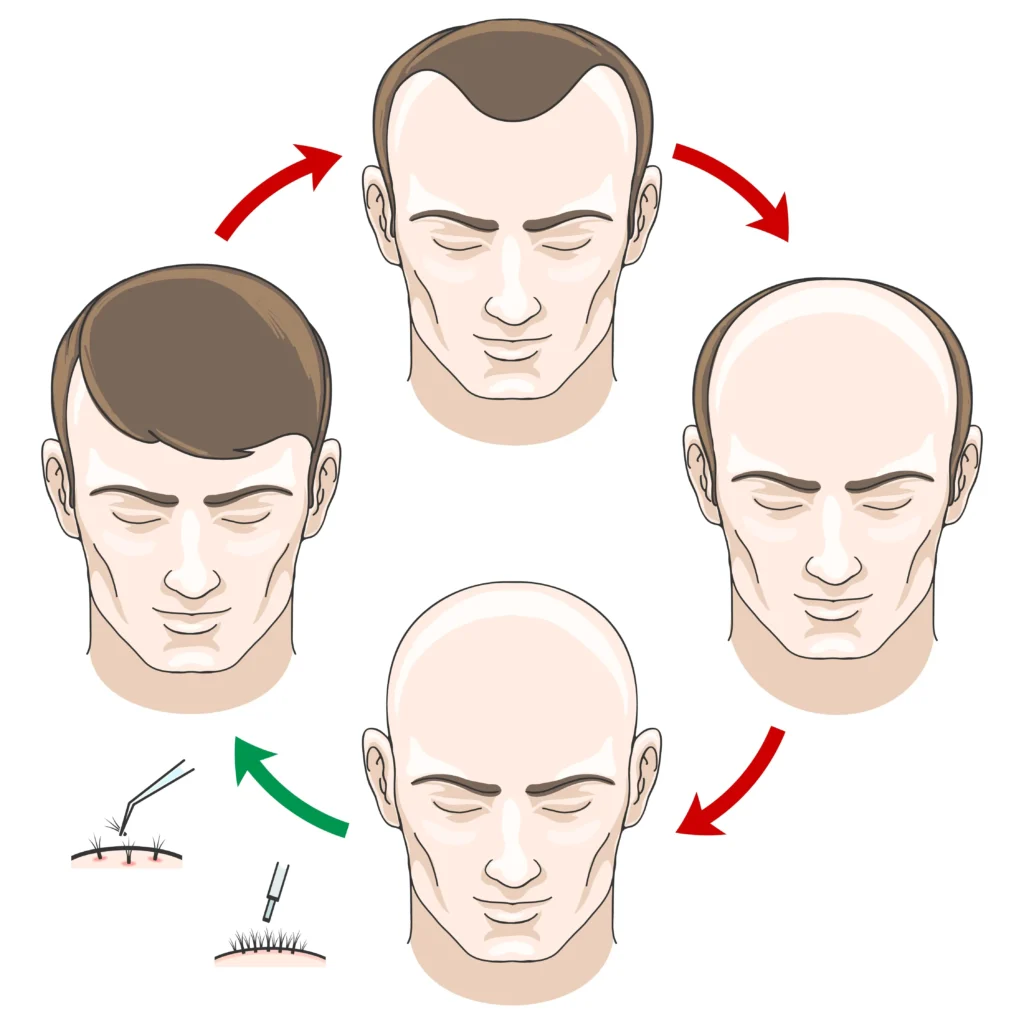
Male pattern baldness, medically known as androgenetic alopecia, is the most common form of hair loss in men. It typically follows a pattern of receding hairline and thinning at the crown, eventually leading to a horseshoe-shaped pattern of hair around the sides and back of the head. This condition is primarily driven by genetics and the hormone dihydrotestosterone (DHT).
- Genetic Factors: The tendency to develop male pattern baldness can be inherited from either side of the family.
- Hormonal Influence: DHT, a derivative of testosterone, shrinks hair follicles, shortening their lifespan and reducing hair production.
Understanding this pattern can help in early diagnosis and treatment. Treatments may include medications such as finasteride and minoxidil, hair transplant surgeries, or laser therapy, aimed at slowing hair loss and promoting regrowth.
Female Pattern Hair Loss: Hair Thinning in Women

Female pattern hair loss, also known as androgenetic alopecia in women, manifests differently than in men, primarily affecting the volume of hair. Women usually experience general thinning over the entire scalp, with the most noticeable loss at the crown, while the hairline generally does not recede.
- Hormonal Changes: This type of hair loss in women is often linked to hormonal changes, especially during menopause when estrogen levels decline.
- Genetic Predisposition: Similar to men, genetic factors play a significant role in female pattern hair loss.
Early intervention is crucial in managing this condition. Treatment options for women include; hair PRP, hair mesotherapy, vitamin and mineral support (if there is any deficiency), hormone replacement threay (f hormonally driven) and potentially hair transplant surgery. A tailored approach based on individual diagnosis and hair health history is essential for effective management and mitigation of hair loss.
Alopecia Areata: Sudden Hair Loss Patches
Alopecia areata is an autoimmune disorder characterized by sudden, unpredictable hair loss, resulting in smooth, round patches of baldness on the scalp and potentially other areas of the body. This condition can affect anyone regardless of age and gender, and its course is highly variable—hair may regrow and then fall out again, or it may grow back permanently.
- Autoimmune Response: The immune system mistakenly attacks healthy hair follicles, temporarily halting hair production.
- Potential Triggers: While the exact cause is unknown, triggers may include stress, illness, or genetic predisposition.
Treatment for alopecia areata aims at suppressing the immune response and stimulating hair growth, including topical immunotherapy, corticosteroids, and newer biologic drugs designed to target specific parts of the immune response.
Telogen Effluvium: Temporary Hair Shedding
Telogen effluvium is a form of temporary hair loss that typically occurs after stress, a shock, or a traumatic event. The hair follicles enter a resting phase prematurely, leading to widespread thinning and shedding across the scalp.
- Common Triggers: Major surgery, severe illness, intense emotional stress, extreme weight loss, or sudden dietary changes.
The good news is that telogen effluvium is usually reversible. Hair begins to regrow as the body recovers from the triggering event. Ensuring a balanced diet, managing stress, and sometimes just waiting it out are part of the recovery process. Nutritional supplements may help speed up the regrowth process. This condition often resolves itself within several months as the hair follicles gradually return to their normal growth cycle.
Traction Alopecia: Hair Loss Due to Excessive Hair Pulling
Traction alopecia is caused by constant pulling or tension on the hair shafts, typically due to certain hairstyles that pull the hair tight, such as ponytails, braids, cornrows, and extensions. Over time, the excessive stress on the hair follicles can lead to permanent damage if not addressed early.
- Preventable and Reversible: Early detection is key. Changing hairstyling habits can prevent further damage and potentially reverse hair loss.
Treatment includes; oral supportive treatments, hair PRP, hair mesotherapy, topical sprays to help regrow hair and corticosteroid treatments to reduce inflammation. In some cases, surgical hair restoration may be necessary if the damage is extensive.
It’s important for individuals experiencing this type of hair loss to modify their hair care practices promptly to avoid permanent bald patches and maintain scalp health.
Cicatricial Alopecia: Hair Loss Caused by Scarring
Cicatricial alopecia, also known as scarring alopecia, is a rare group of disorders that destroy hair follicles, replacing them with scar tissue and resulting in permanent hair loss. Unlike other forms of hair loss, cicatricial alopecia involves inflammation that disrupts the hair’s natural growth process.
- Causes: The exact cause is not well understood but is believed to involve a mistakenly directed inflammatory response by the body’s immune system.
- Symptoms: Early signs include redness, scaling, and pain or itching at the scalp, followed by patchy hair loss where the follicles have been replaced by scar tissue.
Treatment aims to halt the progression of the scarring process. Options may include anti-inflammatory drugs, such as corticosteroids and immunosuppressive drugs. Due to the permanent nature of hair loss in affected areas, some individuals may also consider hair transplantation for cosmetic improvement once the disease has become inactive.
Preventive Measures to Combat Hair Loss

Preventing hair loss involves a combination of lifestyle adjustments, proper hair care, and attention to overall health.
- Maintain a Balanced Diet: Eating a diet rich in vitamins, minerals, and proteins supports hair strength and growth.
- Avoid Harsh Hairstyles: Minimize the use of tight hairstyles that pull on the hair, which can lead to traction alopecia.
- Gentle Hair Care: Use a soft brush and avoid brushing wet hair, which is more prone to breaking. Also, limit the use of heat styling tools and harsh chemical treatments.
- Manage Stress: High stress levels can lead to temporary hair loss. Techniques such as meditation, regular exercise, and adequate sleep can help manage stress effectively.
- Regular Scalp Care: Keeping the scalp clean and using products that improve scalp health can prevent conditions like dandruff, which can contribute to hair loss.
Implementing these preventive measures can significantly reduce the risk of developing hair loss and contribute to overall hair health.
Natural Remedies for Hair Loss

Natural remedies can also play a role in the management and reduction of hair loss.
- Essential Oils: Peppermint and rosemary oil have been shown to stimulate hair growth. Apply diluted forms to the scalp with a massage to improve blood circulation and follicle health.
- Onion Juice: Rich in sulfur, which promotes collagen production, onion juice is believed to aid in hair regrowth. Apply the juice to the scalp and wash off after an hour.
- Aloe Vera: Known for its soothing and anti-inflammatory properties, aloe vera can calm the scalp and condition the hair.
- Green Tea: Rich in antioxidants, green tea can enhance hair growth and reduce hair loss when used as a rinse after shampooing.
- Coconut Oil: With its rich array of fatty acids, coconut oil can penetrate the hair shaft and reduce protein loss from hair.
While natural remedies can be helpful in reducing hair loss and promoting hair health, it’s important to approach them as complementary treatments and not as replacements for medical interventions, particularly in cases of severe hair loss.
Effective Hair Loss Treatment Options
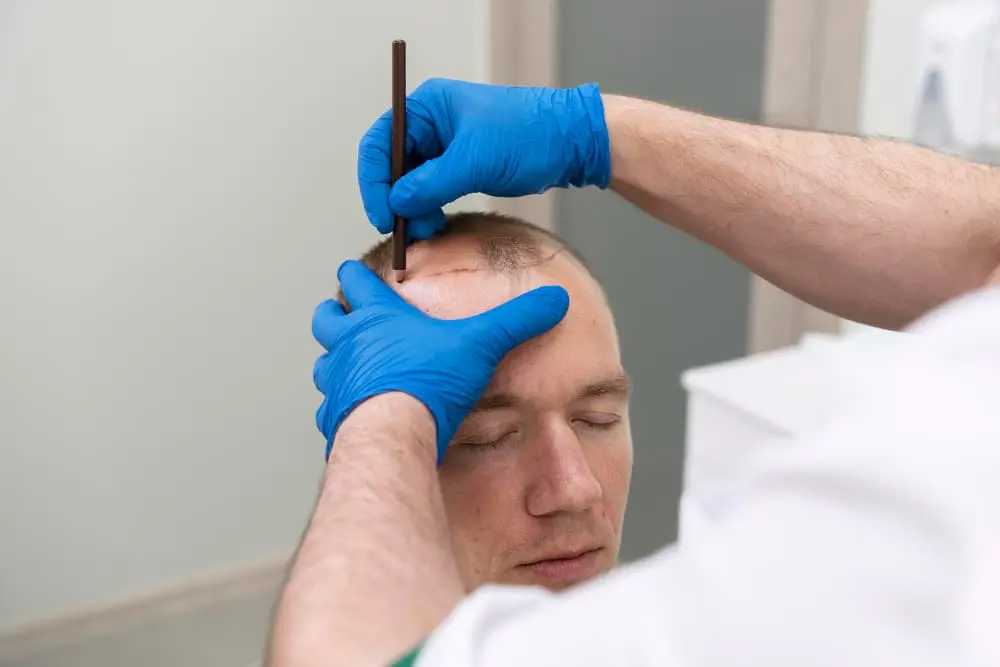
At Istanbul Hair Institute, we recognize the profound impact hair loss can have on both your personal and social life. This understanding drives our commitment to offering state-of-the-art treatment options that are both effective and tailored to meet your individual needs.
Our clinic specializes in both Follicular Unit Extraction (FUE) and Diract Hair Implant (DHI), ensuring that you receive the most sophisticated and minimally invasive hair restoration procedures available.
Additionally, we offer cutting-edge treatments like hair mesotreapy, Platelet-Rich Plasma (PRP) Therapy and Low-Level Laser Therapy (LLLT), microneedling with dermapen or more advanced radiofrequency which have shown excellent results in stimulating hair growth and improving scalp health without the need for surgery. Understanding that each case of hair loss is unique, we provide personalized treatment plans that address the specific condition and goals of each patient.
Why Choose Our Istanbul Clinic for Hair Loss Treatment?

Choosing the right clinic for your hair loss treatment is crucial, and at Istanbul Hair Institute, we provide an environment of expertise and care that stands out:
- Expert Medical Team: Our team is comprised of dedicated specialists with years of experience in treating all types of hair loss. We stay at the forefront of medical research to bring you the most effective treatments.
- Patient-Centered Approach: At our clinic, we prioritize your needs and comfort. We listen carefully to your concerns and aim to provide a supportive and informative experience from your initial consultation through to your treatment and follow-up care.
- High Success Rates: We are proud of our high patient satisfaction and success rates. Our holistic approach not only treats hair loss but also helps in preventing future thinning and baldness.
- Global Standards of Care: As a leading clinic in Istanbul, we adhere to international standards of medical practice and patient care. Our facilities are equipped with advanced medical technology to ensure safe and effective treatments.
Visit our website to explore how we can help you regain not only your hair but also your confidence and comfort in your appearance. Trust us to guide you through your journey to hair restoration with the utmost care and professionalism.
Recent Posts
-
 Effective Solutions for Seasonal Hair Loss: What Treatments to Consider04 Feb 2025
Effective Solutions for Seasonal Hair Loss: What Treatments to Consider04 Feb 2025 -
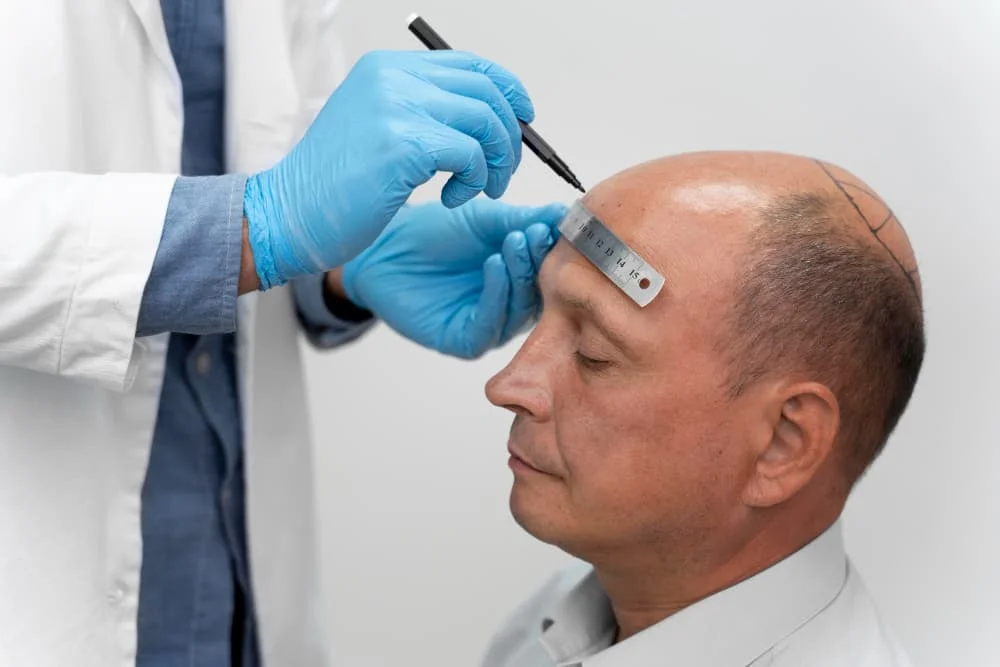 Does the Density of Hair Transplants Matter? Achieving a Full Look04 Feb 2025
Does the Density of Hair Transplants Matter? Achieving a Full Look04 Feb 2025 -
 Look Younger: Mini Facelift and Neck Rejuvenation02 Feb 2025
Look Younger: Mini Facelift and Neck Rejuvenation02 Feb 2025 -
 Can Ozone Therapy Really Boost Your Mood and Energy Levels?02 Feb 2025
Can Ozone Therapy Really Boost Your Mood and Energy Levels?02 Feb 2025 -
 Say Goodbye to Static: How to Get Rid of Static in Hair29 Jan 2025
Say Goodbye to Static: How to Get Rid of Static in Hair29 Jan 2025
Opening Hours
- Monday–Saturday: 09:00 – 18:00
- [email protected]
